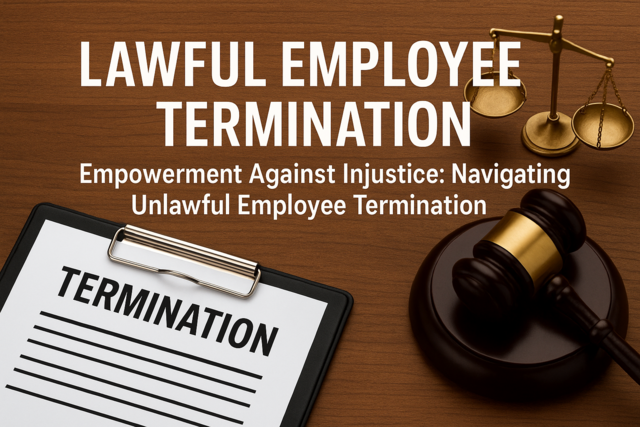Lawful Employee Termination
Navigate Termination with Confidence and Compliance

5 Hours average completion time
0.5 CEUs
15 Lessons
28 Exams & Assignments
10 Discussions
47 Reference Files
154 Articles
Mobile Friendly
Last Updated December 2025
Empowerment Against Injustice: Navigating Unlawful Employee Termination
In the dynamic realm of professional life, many events can shape or shift our career trajectory. While certain challenges might be seen as stepping stones, there are incidents that demand a stronger stance. One such grave occurrence is unlawful employee termination. Every employee deserves transparency and fairness when parting ways with an employer. Yet, the reality often reveals instances where these principles are overshadowed.
Delve deep into this course, designed to be your beacon against unjust termination practices. Whether you're an employee seeking justice or an employer striving for ethical business conduct, this course tailors to your needs.
Here's your guided roadmap:
-
Deciphering Termination Reasons: Develop a discerning eye as you learn the demarcation between legal and illegal grounds for termination. Understand the nuances and the underlying reasons that tip the scale.
-
Strategizing Your Response: Whether you've been on the receiving end of unfair treatment or are proactively safeguarding against such incidents, gain insight into actionable steps and preventive measures to uphold justice.
-
Navigating Post-Termination Waters: An unjust termination doesn't conclude the journey. Understand how to heal, rebound, and even thrive after facing such adversity, whether you're an employer or an employee.
Challenges might be inevitable, but the courage to confront them, learn, and create change is a choice. Equip yourself with the knowledge and skills to champion fairness in professional environments. Are you prepared to be a beacon of change in the face of injustice? Dive in and let's reshape the narrative together!
- Handling unlawful termination
- Legal grounds identification
- Litigation impact awareness
- Policy compliance and improvement
- Post-termination navigation
- Employment law knowledge
- Termination challenge evaluation
- Post-dismissal recovery
- Rights protection strategies
- Due process adherence
- Strategic termination planning
-

Resume Writing
-

Current Discoveries of the Universe
-

Developing Great Social Skills
-

ESL Grammar Skills Level 5
-

Organizational Behavior in Business
-

Business Ethics
-

Operations Management 101
-

Mastering Conversation Skills
-

Running Effective Meetings
-

Customer Relationship Management
-

Decision Making Skills
-

Talent Management for Business
-

Modern Marketing Strategies for Small Business
-

Creating an Effective Sales Team
-

Etiquette Consultant
-

Small Business Guide
-

Ultimate Secretary Training Bundle
-

Workplace Drug Use - An HR Guide
-

Motivational and Public Speaking
-

Management Consultant 101
-

Community Development 101
-

Creating and Managing a Non-Profit Organization
-

Innovative Thinking Skills
-

Procurement Management
-

Job Performance Appraisals - A How To Guide
